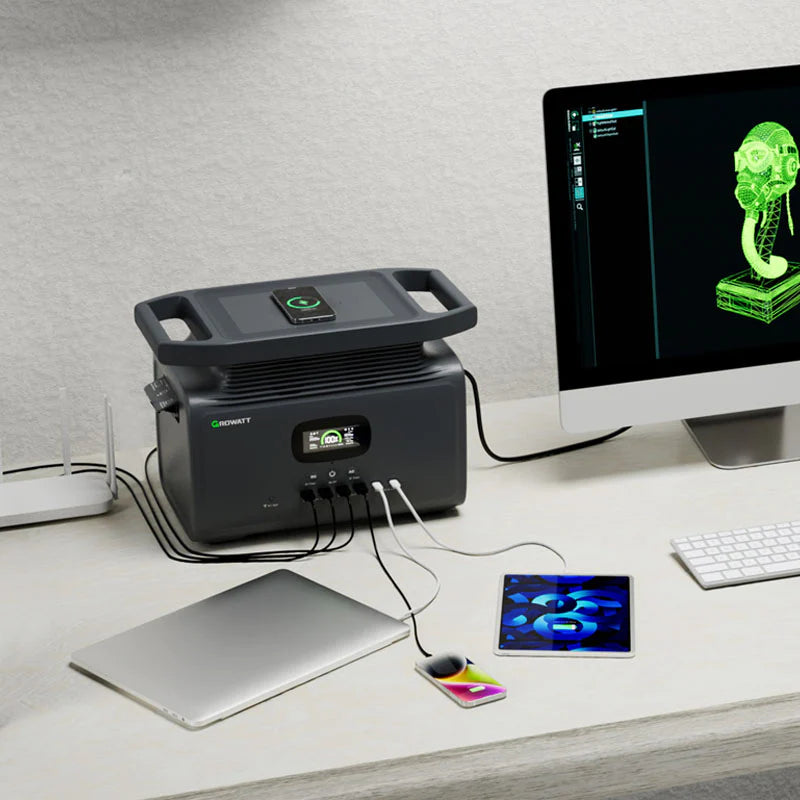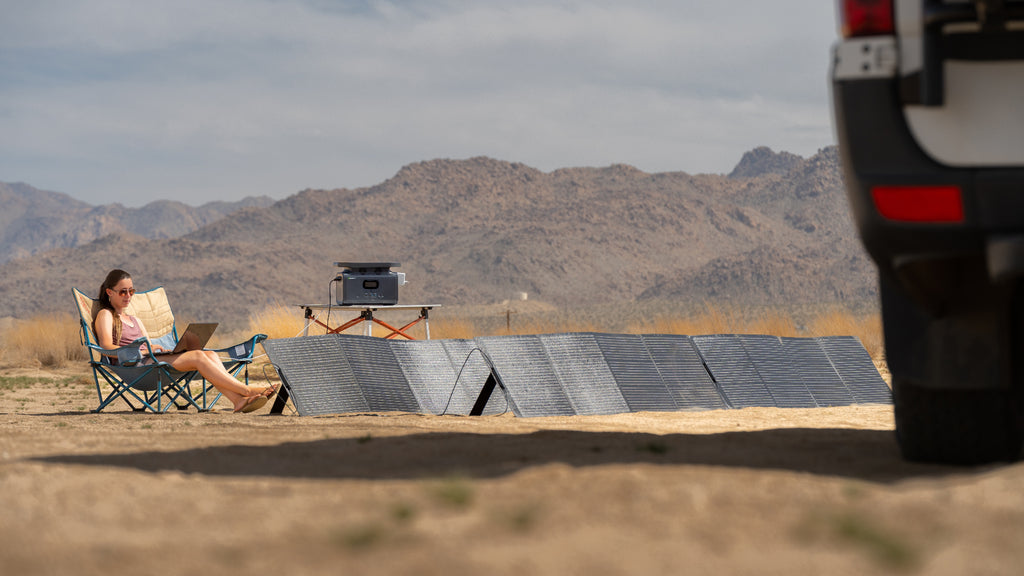We've all experienced the disappointment of a phone that's about to run out of battery without access to a charger. You're trying to navigate an unfamiliar city, take pictures on vacation, or need to make an important call, and suddenly see that dreaded low battery warning. Anxiety starts to set in as you desperately try to conserve power and ask around for a charger. But what can you do if no charger is available?
Luckily there are several dependable ways to charge your phone in a difficult situation without your normal charger. Portable power banks, wireless charging, public USB ports, and even some more unique solutions like solar panels can help you avoid a dead phone battery until you can access a charger again. This article will outline some of the top options for charging your phone without a traditional charger, so you'll be prepared the next time you find yourself needing emergency phone charging. With a bit of preparation and creativity, you can ensure your phone battery won't die at the worst possible moment.
Portable Power Banks
Portable power banks are battery packs that can be charged up ahead of time and used to charge your phone on-the-go when you don't have access to an outlet. Power banks come in a range of capacities, with higher capacity meaning they can charge your phone more times or charge multiple devices. Many power banks today have capacities of 10,000 mAh or more, which should fully charge most modern smartphones multiple times.

When selecting a power bank, you'll want one that is compatible with your phone's fast charging technology. Many of the latest power banks support fast charging standards like USB Power Delivery and Qualcomm Quick Charge. This allows you to charge your phone rapidly from the power bank, often to 50% or more in just 30 minutes.
In terms of portability, power banks come in compact sizes comparable to a smartphone, making them easy to toss in a bag or purse. The key is remembering to keep one charged up and with you so it's ready when you need it. Having an extra power bank that permanently stays in your travel bag is a good idea. With a fully charged 10,000 mAh+ power bank, you can have several phone charges ready anytime, anywhere.
Wireless Charging
Wireless charging allows you to power up your phone without plugging it in. Instead, you simply place your phone on top of a wireless charging pad or stand. This charges your phone via electromagnetic induction between the charging station's coil and your phone's built-in coil.

Wireless charging is very convenient if you already have the proper equipment. All you need is a wireless charging pad or stand and a phone that supports wireless charging. Many newer Android phones and iPhones support wireless charging, but you'll want to check your phone's specifications to be sure.
The nice thing about wireless charging is that it allows you to easily top off your phone's battery throughout the day while at home or the office. You can keep a wireless charger on your nightstand, desk at work, or table at home. Then whenever you set your phone down, it begins charging. No fumbling with cables required.
Wireless charging is not as fast as typical wired charging, but it's perfect for casual charging. Just note that you need to use a wireless charger that supports faster charging standards if available for your phone, such as Qi fast wireless charging. This helps cut down on the longer charging times.
So if you already have a good wireless charger and a compatible phone, wireless charging provides a convenient way to charge up without your typical charger cable. It works best as a secondary option for casual charging during the day or overnight while sleeping.
Public USB Ports
Many public spaces now provide USB ports that allow you to charge your phone, given you have the proper charging cable with you. Airports, coffee shops, libraries, malls, and other facilities may offer public USB charging stations.
Look around for USB ports at the gate when you're waiting for your flight at the airport. More and more airports are installing USB chargers as part of the gate seating. Coffee shops and cafes often have USB charging ports available too. Ask your barista or look around the tables and counters.
Public libraries are another great place to find a USB port to charge up. See if your local library has added USB stations for patrons. Larger malls may also have USB charging stations set up around the property. Check areas like the food court.
The key is having your USB phone charging cable with you. The USB ports provide the power, you just need the cable to transfer and adapt that power to your specific phone. With the right cable, you can often get a quick partial charge to your phone from a public USB port in 30-60 minutes. It's not a full charge, but can provide enough power to get you through until you have access to a regular charger again.
Car Chargers
Although less convenient than a portable power bank or wireless charger, car chargers can charge your phone in the car if you have the specialized USB car charger. This only works when driving and having access to your car, so it is not as broadly useful as some other options. However, keeping a car charger available can be a good backup if you forgot your regular charger and find yourself on a long drive.
The key is having the right type of car charger that is compatible with fast charging your particular phone. Many cars have USB ports or cigarette lighter ports where you can plug in a phone charger. The car needs to be turned on and driving for this source of power to work. Note that charge time will be slower than direct AC power, but still faster than a drained battery. So in a difficult situation, a car charger can provide enough juice to revive your phone when no other options are available. Just be sure to purchase the properly fitted car charger for your phone model beforehand so it is there when you need it.
Solar Chargers
Specialized solar panel chargers can charge your phone off the sun. While slower than other charging methods, solar chargers are an eco-friendly option.

Solar chargers come in a variety of designs, from folding panels you can carry in your bag to chargers built into outdoor gear like backpacks. The solar panels absorb sunlight and convert it into electricity to charge your devices.
Look for solar chargers designed specifically for phones and small electronics. They will optimally charge your phone directly from the sun. Larger solar panels meant for camping situations can also work but may be overkill for just charging a phone.
The main downside of solar chargers is the slow charge time, as they rely on consistent sunny conditions. But they can be ideal for emergencies or outdoor activities where you won't have access to electrical outlets. Going completely off-grid, solar chargers provide renewable energy without needing batteries or fuel.
For those concerned about their environmental impact, solar chargers are a green charging solution. While not as fast as a wall charger, they demonstrate that sunlight alone can keep your phone powered. Just be sure to get a solar charger with strong reviews on charging performance to provide enough energy for your needs.
Hand Crank Chargers
Hand crank chargers are an option when you need to charge your phone and don't have access to electricity. These chargers work by converting kinetic energy from manually cranking a handle into stored electrical energy in a battery.
The main advantage of hand crank chargers is that they are completely portable and don't require an external power source. Many models are quite compact in size, similar to an external battery pack. This makes them easy to toss in a bag or backpack for emergency charging situations.
However, charging your phone via a hand crank can be tedious and time consuming. You need to continuously turn the crank for often 10-15 minutes to generate enough charge to sufficiently power up your phone. And you may need to crank multiple times to fully charge your phone's battery from empty to full.
While hand crank chargers are a reliable option in a difficult situation when electricity isn't available, for everyday charging needs a portable power bank is often a simpler and less labor-intensive solution. But having a hand crank charger as a backup can provide peace of mind if you frequently find yourself away from power outlets for extended periods.
Conclusion
Charging your phone when you don't have your normal charger can be challenging, but there are several reliable solutions to get you through the day.
The top recommendation is to always carry a portable power bank that is charged ahead of time and compatible with fast charging for your phone. Portable chargers come in various capacities, are lightweight, and can easily fit in your pocket or bag. Having one on hand, fully charged, is your best bet for charging on the go when you don't have your normal charger.

You can also try wireless charging if you have access to a wireless charging pad and your phone is compatible. This allows you to simply place your phone on the pad to charge wirelessly. Many coffee shops, airports, and other public places now have wireless charging stations.
As a last resort, look for USB ports in public places like airports, cafes, libraries, and more that allow you to plug in and charge your phone, provided you have the right cable. Options like car chargers, solar chargers, and hand crank chargers can also work in a difficult situation.
The key is to always be prepared by keeping a portable power bank charged and with you. But if you find yourself without your charger and without a power bank, the methods outlined here can help you get by until you can fully recharge your phone.






